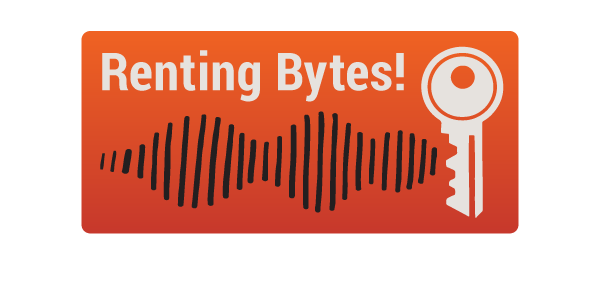Who is using the Tribunal and why?
Jack Moon • 09/10/2022
and Jemima Mowbray, Policy and Advocacy Manager
We are always trying to better understand what is happening for NSW renters. We want to make sure we can identify the problems and pressures renters are experiencing, as well as whether the policies and laws in place to support them are working.
One way we do this is to look at what is happening within the tenancy and social housing lists of the Consumer and Commercial Division of at the NSW Civil & Administrative Tribunal (sometimes called ‘NCAT’ or just ‘the Tribunal’). When renters and landlords have a dispute and have not been able to resolve it themselves, they may choose to apply to have the matter heard by NCAT. Landlords and tenants are both able to apply to the Tribunal, which is designed to be a quick, cheap and informal process for independently resolving disputes.
Looking at these lists we ask two key questions:
- Who is taking action?
- About what?
Only a very small number of disputes make their way to Tribunal, but the matters being heard provide us with a valuable lens over the rental sector and who is accessing this avenue of justice.
An overview of applications to the Tribunal
Recently we requested and received data from NCAT about the lodgements of their tenancy and social housing lists over the past financial year, that is July 2021 - June 2022 which covers more than 53,000 applications. Here is a quick breakdown of the data.
Who is taking action?
Landlords are using the Tribunal at a much higher rate than renters. In the tenancy list (private rental) around 70% of all applications are made by the landlord. In the social housing list over 90% of applications made are by a social housing landlord.
About what?
Eviction applications for non payment of rent were the primary type of eviction applications made for both private and social housing tenants. Eviction applications were 47% of all applications and 68% of landlord applications in the private tenancy list. 67% of evictions were for non payment of rent. In social housing, eviction applications were 67% of all applications and 72% of landlord applications. 81% of evictions were for non payment of rent.
Top 4 matters
Landlords are applying for:
Renters are applying for:
Key take-away: NCAT is primarily used by landlords. And they use it to seek eviction.
Analysing eviction applications
Given the predominance of applications for termination by landlords at the Tribunal, we've done a deeper dive into the data to look at eviction applications at the Tribunal.
Who is applying to evict renters?
Though it may surprise some, the use of NCAT as an 'eviction Tribunal' is even more stark in social housing than in the private rental sector. Over 90% of all applications in the Social Housing list are made by social housing landlords (public housing and Community Housing Providers), and more than two in three of all the applications social housing landlords make are for eviction.
And some social housing landlords are applying to evict renters at much higher rates than others. Public housing tenants are taken twice as often private rental tenants to Tribunal by their landlord, while community housing tenants face eviction proceedings close to 5 times more often.
From the data we currently hold we don't know the Tribunal outcomes of the applications for eviction, and it is important to note not all eviction proceedings lead to vacant possession orders. Indeed, some landlords apply for a termination without the primary intention being to seek vacant possession orders. Social housing providers, for example, are more likely to be seeking an agreement and consent orders for a payment plan when applying for Termination for non-payment of rent (the vast majority - over 80% - of termination applied for). Using the threat of homelessness to coerce a repayment plan instead of just applying for the repayment plan is not a great practice. And receiving notice that your landlord is seeking eviction at Tribunal is experienced by the renter in much the same way, no matter what the landlord's intention when applying.
Key takeaway: Social housing landlords are applying to evict at a much higher rate than landlords in private rental.
Where are eviction applications being made?
When we add in the postcode data provided to us from NCAT we can also see where evictions in the private rental market are happening in NSW. The map below displays eviction applications for the private rental market within the last year for local government areas (LGAs) across NSW. It shows the number of evictions per 100 rentals in each LGA. As we can see a large portion of these eviction applications in private rental are for renters in the western Sydney area.
There are a lot of renters in Western Sydney, so we would expect to see a high number of renters from Western Sydney represented. However, looking at the rate of eviction in Western Sydney LGAs in terms of eviction applications for every 100 rentals, it is clear that landlords in Western Sydney are applying for eviction at a higher rate compared to landlords in other LGAs.
Key takeaway: Private renters in Western Sydney are disproportionally impacted by eviction applications.
What does this tell us about our renting system?
Looking at the tenancy and social housing lists data from NCAT makes clear the Tribunal is primarily being made use of by landlords to seek eviction. However, the data does not tell the whole story of eviction. Only a very small number of evictions - generally less than 1% - end up with the landlord taking formal action and applying for termination through NCAT. Many evictions will end without formal orders from Tribunal, and some evictions - for example, 'no grounds' evictions in which a landlord is not required to provide a reason - are generally less likely to result in the landlord applying to Tribunal.
The data also hides some important aspects of renters' experience. While 'repairs and maintenance' is consistently one of the top issues renters contact the Tenants' Union of NSW and local Tenants' Advice and Advocacy Services about, it didn't make it to the top 4 matters renters apply to Tribunal for. This may reflect the fact renters do not feel confident to formally assert their rights during a tenancy - they have too much to lose. By far, rental bonds were the main thing renters apply to the Tribunal on. Disputes around rental bonds generally arise once a tenancy has ended or when it is being dissolved. It is a disappointing reflection of our renting system and current access to justice that renters seem most confident to assert their rights at Tribunal only once their tenancy has already ended or is coming to an end.
NCAT data is a rich source of information about how our renting system is working. Unfortunately at the moment the report card it delivers doesn't look particularly good.




